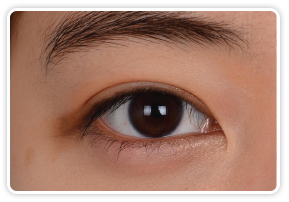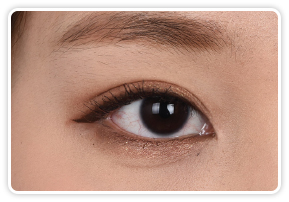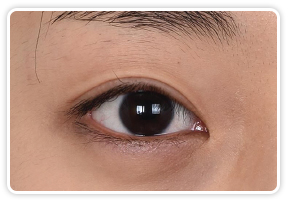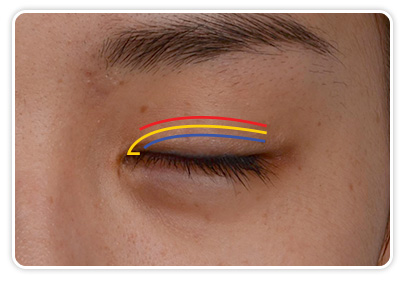- Facelift
- Eye
- Eyelid Revision
- - Cause of depressed scar and eyelash eversion
- - Pretarsal fullness “Sausage deformity”
- - Triple folds (Multifolds)
- - Shape of double eyelid
- - Epicanthoplasty revision
- Primary double eyelid surgery Nonincision Partial-incision, incision
- - Primary Double Eyelid Procedure
- - Non-incision & Partial incision Suture ligation technique for double eyelid folding/ Non-incisional Blepharoptosis correction
- - Incisional Blepharoplasty procedure
- Epicanthoplasty lateral canthotopy lower traction
- - Epicanthoplasty
- - Lateral Canthotomy and canthoplasty outside further opening
- - Lowerlid traction
- Blepharoptosis Correction/Eye opening enhancement
- Eye bag, Transconjunctival blepharoplasty, Midface enhancement
- For Middle Age
- - Sagging eye
- - Lower Blepharoplasty
- Eye surgery Notices
- Nose
- Nose reoperation
- Low Nose
- - Low Nose Surgery
- - Reduce nose (Osteotomy)
- Male Rhinoplasty
- Artecoll Nose Surgery
- Nose tip surgery
- Wing of nose surgery
- Short nose, long nose
- Columella plasty
- Hump Nose deformity, Aquiline nose
- Corrective Rhinoplasty for Crooked Nose, Nasal Septal Deviation
- Nostril Reduction
- Rhinoplasty Notices
- Facial contouring
- Breast / Body contour
- Breast enlargement surgery
- - Drop-shaped Breast Surgery
- - Circular Breast Surgery
- - Fat Grafting Breast Surgery
- Breast reduction surgery
- Drooping breast correction
- Nipple Surgery
- Gynecomastia
- Polymastia
- Breast Restoration Surgery
- Breast reoperation
- Breast surgery Notices
- Double S Line
- Liposuction
- Abdominal Plastic
- Hip-up Surgery
- Calf Plastic Surgery
- Accusculpt
- Body Shape Injections
- Hair
- Mesotherapy & etc.
- 홈으로
- Eyelids
- Incisional Blepharoplasty procedure
| Duration of procedure 1hour |
Anesthesia Local anesthesia with light sedation |
Stitch Removal 4 days After the Surgery |
Recovery Period Normal activities after 2 days, 70% swelling resolution with 7days (almost same as non-incision technique) |
- Clients who have sagging eyes or excess fat on their eyelids
- Clients who need bigger or higher eyes (patients in need of stronger levator palpebrae muscles)
- Clients who have thick eyelids
- Clients who want clear line on their eyelids that will not loosen easily.
- Clients who need reoperation from previous unsatisfactory procedure
Many people worry about long recovery period and scar because this method makes bigger incisions compared to non-incision and partial incision methods. Actually, recovery period is not prolonged by incisional procedure if only done in a meticulous manner, because wound healing and swelling is not depend on the length of the incision but the severity of the surgical trauma and height of the designed line. In my practice, the recovery time for incisional blepharoplasty is almost same with non-incisional procedure. Within 7 days, 70% of the swelling can be faded and can get back to normal daily life. Although the scar on the line is inevitable, it can be well hidden in the natural skin crease and make the skin fold naturally. So, even in the first procedure, we can
 |
 |
 |
| In-fold | out-fold | in/out-fold |

'Appropriate line height' is more important than in/out shape'
Inout-fold impossible, In-fold operation is recommended
However, even in the in-fold shape, the double eyelid fold should begin as early as possible from the innermost side. If the inner line is too low, it looks narrow and smaller palpebral aperture.
quick menu open
-
Operating hours
- Weekdays
- 09:30~19:00
- Saturdays
- 09:30~17:30
- break time
- 12:00~13:00
-
Tel.
(+82)2.544.8807








